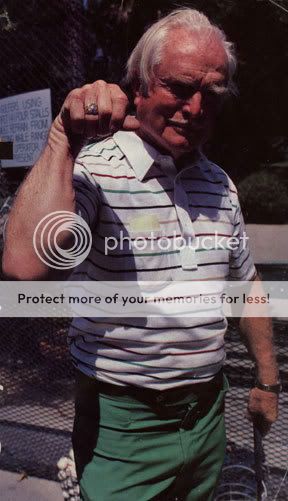Mand-rin....

The corkscrew is nothing to do with the body. It is the use of the right forearm (note- nothing to do with straightening the right elbow either, although that will be a secondary effect of using the motion correctly)...
It is the rotation of the right forearm from elbow to wrist, while the elbow is bent and the right hand is hyper extended (cupped back/cocked). One way on the backswing (winding up) and the other way at the top of the swing to start down..like turning a doorknob in both directions..
Try this to get the right idea
This is the "Corkscrew" or "The Throw"...
Point your right arm out at 45* to the right of your body.
Keeping your right upper arm horizontal, bend from the elbow until your forearm is pointing straight up to the sky.
Now cock your wrist so your palm is pointing up to the sky.
Now stick a club in that hand. The shaft will be horizontal and pointing directly behind you.
Now rotate your right forearm anti-clockwise (looking from the elbow upwards). Don't move your elbow or upper arm!.. The clubshaft will now have swung around and smacked you on the back of the head (sorry 'bout that, I forgot )..

Now simply rotate your right forearm clockwise, BUT keep your elbow still and the full wrist cock so your palm is facing the sky all the time. You will find the clubshaft will spin to your right quickly.
Now put your left hand on the grip also. Do exactly the same winding up (anti-clockwise rotation) process. you will find the left hand on the club is now stopping you smacking the back of your head, because the left wrist by this time is fully cocked and the right forearm muscles are really wound up.
Now do the fast clockwise right forearm rotation again. Keep the right hand under the left at all times (helps if you keep a flat left wrist).
Now do your normal golf backswing and do that anti-clockwise wind up process with the right forearm once your right elbow starts bending. At the top when beginning the downswing, really rotate that right arm clockwise. The quicker you rotate the forearm, the quicker you must pivot...Then just hang on...
Have fun , but don't hurt yourself, the first time I tried this in earnest I nearly pulled my shoulders out of their sockets.......so make sure you pivot when you try this....

RE MA "stop" photos you referred to.
Something for you to consider...
If you use the corkscrew or Austin's throwing action, its purpose is to accelerate the clubhead around the clubhead arc. For max clubhead speed, you throw as fast as you can.
Here is where many people seem to think there is a contradiction, because, as you said, in stop-photos of Austin he is showing massive lag when approaching impact.
How can that contradiction occur?...
The answer is, it is a matter of position....
The position I am referring to is the hands relative to the clubhead during any part of the downswing before impact...
Let's say you throw from the top and bring your hands down very slowly. It does not take a genius to realize that the clubhead will soon overtake the hands and in our scenario (the actual swing) would lead to premature release of the clubshaft angle relative to the left arm.....
Therefore, when throwing the club using the corkscrew or Austin's motion, no matter what speed you throw at, the hands must move down correspondingly quickly to remain in front of the clubhead and retain the lag...
This is why Austin said he increases the speed of the pivot the harder he throws.
The speed of the pivot needs to increase to allow you to drop the hands quicker, thus allowing them to remain in front of the clubhead...
The difference between doing this, as opposed to the normal "holding the lag angle" until late in the downswing is that there is really nothing extra to do to make the clubhead release at the bottom, the "centrifugal" action does it all for you..
With a normal "lagging" swing, the clubhead has much less momentum before release, thus an actual applied effort is needed to make the club release at the bottom. This is usually done by leverage on the grip by one or both hands, plus the extension of the righ arm.
This is why Austin says if you hold off releasing the club, it "knocks you back" due to the late effort involved...
The corkscrew or Austin's motion is, in fact, much simpler. You throw the club right from the top (which guarantees you get the club moving fast) and then all you have to do is keep your hand in front of it on the downswing..
Therefore, the art to the corkscrew or throw is to learn (intend) to pivot quickly enough to keep your hands in front of the fast moving clubhead...
IMO this is much easier to do than trying to hold the lag as long as possible and then attempting to release the club correctly at the last minute...

